Chapter: 10th Science : Chapter 20 : Breeding and Biotechnology
Green Revolution
Green
Revolution
Green Revolution is the
process of increasing food production through high yielding crop varieties and
modern agricultural techniques in underdeveloped and developing nations. Dr.
Norman E. Borlaug, an American agronomist the “Father of the Green Revolution”,
received the Nobel Peace Prize in 1970. In India Dr. M. S.
Swaminathan joined with Dr.Borlaug in bringing Green Revolution by
introducing Mexican wheat varieties. This eventually increased wheat and rice
production between 1960 and 2000.
1. Breeding for high yield and better quality
Major challenge that
India faced during post-independance period was having enough food production
for the growing population. Efforts were taken to develop high yielding
varieties of crops, leading to Green Revolution.
Semi-Dwarf varieties in Wheat and Rice
Sonalika, Kalyan Sona are
semi-dwarf varieties of wheat developed from high-yielding, semi -dwarf,
fertilizer responsive wheat varieties from Mexico. IR-8 (Miracle rice)
is a high- yielding semi-dwarf rice variety developed by International Rice
Research Institute (IRRI),Philippines. In 1966, this was first introduced in
Philippines and India. It was a hybrid of a high yielding rice variety Peta from
Indonesia, and Dee-geo-woo-gen (DGWG) a dwarf variety from China.
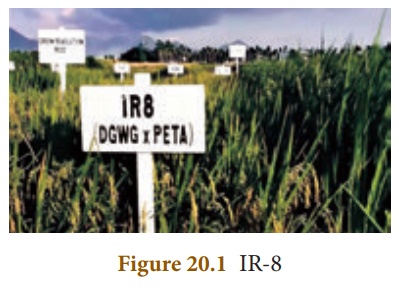
2. Plant Breeding for Disease Resistance
Plant diseases are
caused by pathogens like viruses, bacteria and fungi. This affects crop yield.
Hence, it is important to develop disease resistant varieties of crops, that
would increase the yield and reduce the use of fungicides and bactericides.
Some disease resistant varieties developed by plant breeding are given below:
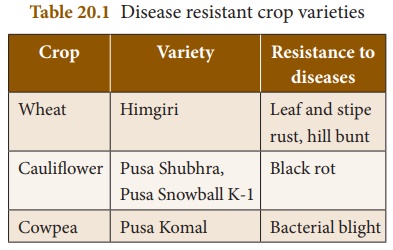
3. Plant Breeding for Insects/Pests
Resistance

In addition to
microorganisms, a large number of insects and pests also cause damage to the
crops. Hence, insect and pest resistant crop varieties were developed. Some of
them are given below:
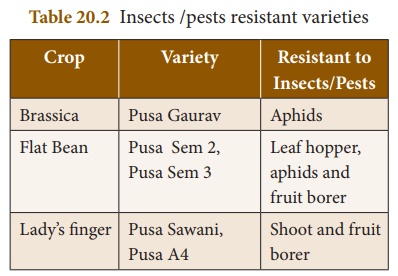
4. Plant Breeding for Improved Nutritional
Quality
Undernutrition and
protein malnutrition among human population is a major health problem which has
been receiving much focus throughout the world. Apart, from humans it also
affects the health of farm animals. To combat these conditions, human and
animal health are to be determined by the nutritional quality of the feed
crops. The nutritional quality of crops depends on quality and quantity of
nutrients.The nutritional quality may be improved with respect to its
1.
Protein content and quality of protein
2.
Oil content
3.
Mineral content
Biofortification
Biofortification is the
scientific process of developing crop plants enriched with high levels of
desirable nutrients like vitamins, proteins and minerals. Some examples of crop
varieties developed as a result of biofortification are given below:
1. Protina, Shakti and
Rathna are lysine rich maize hybrids (developed in India).
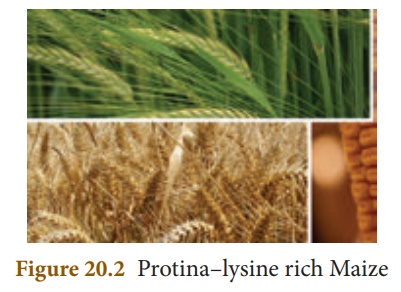
2. Atlas 66, a protein
rich wheat variety.
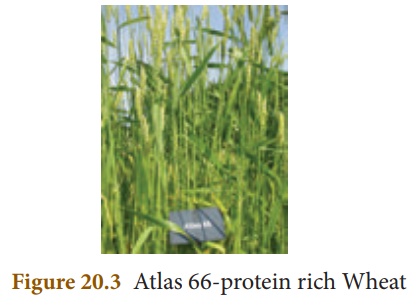
3. Iron rich fortified rice variety.
4.
Vitamin A enriched carrots, pumpkin and spinach.
Related Topics